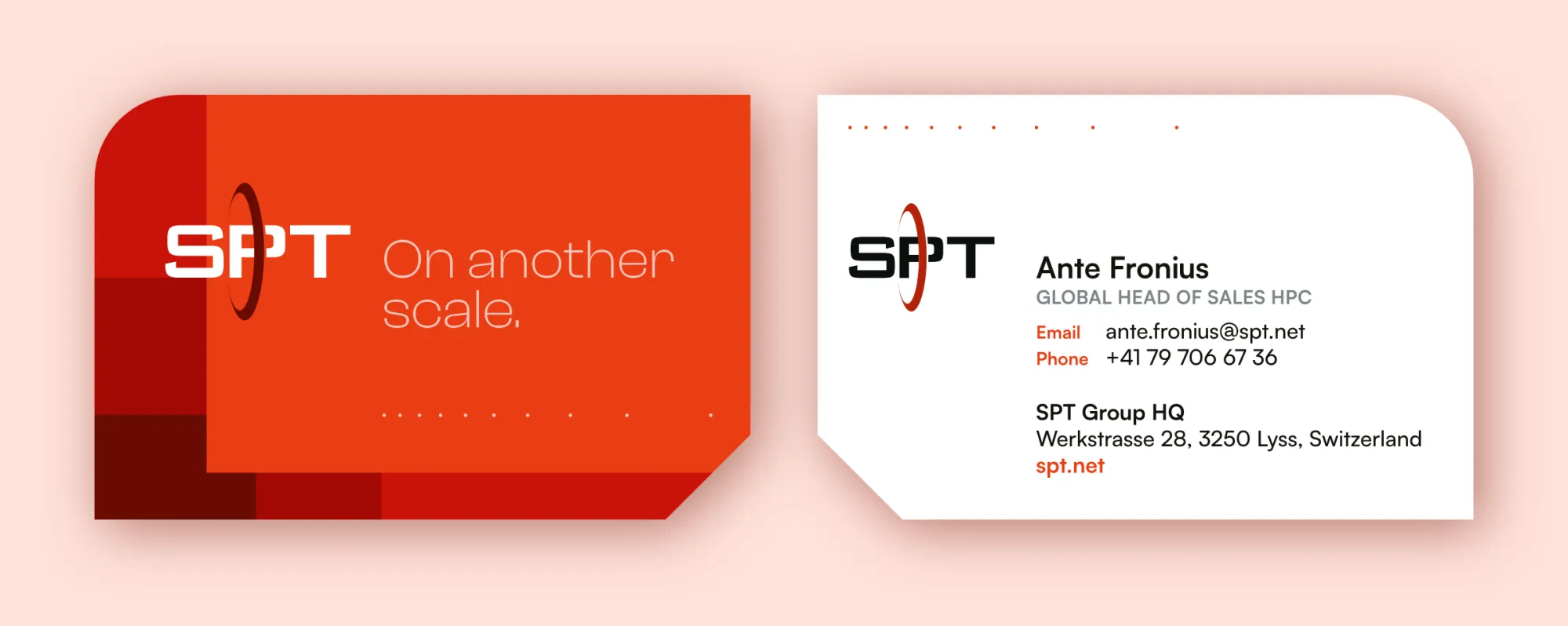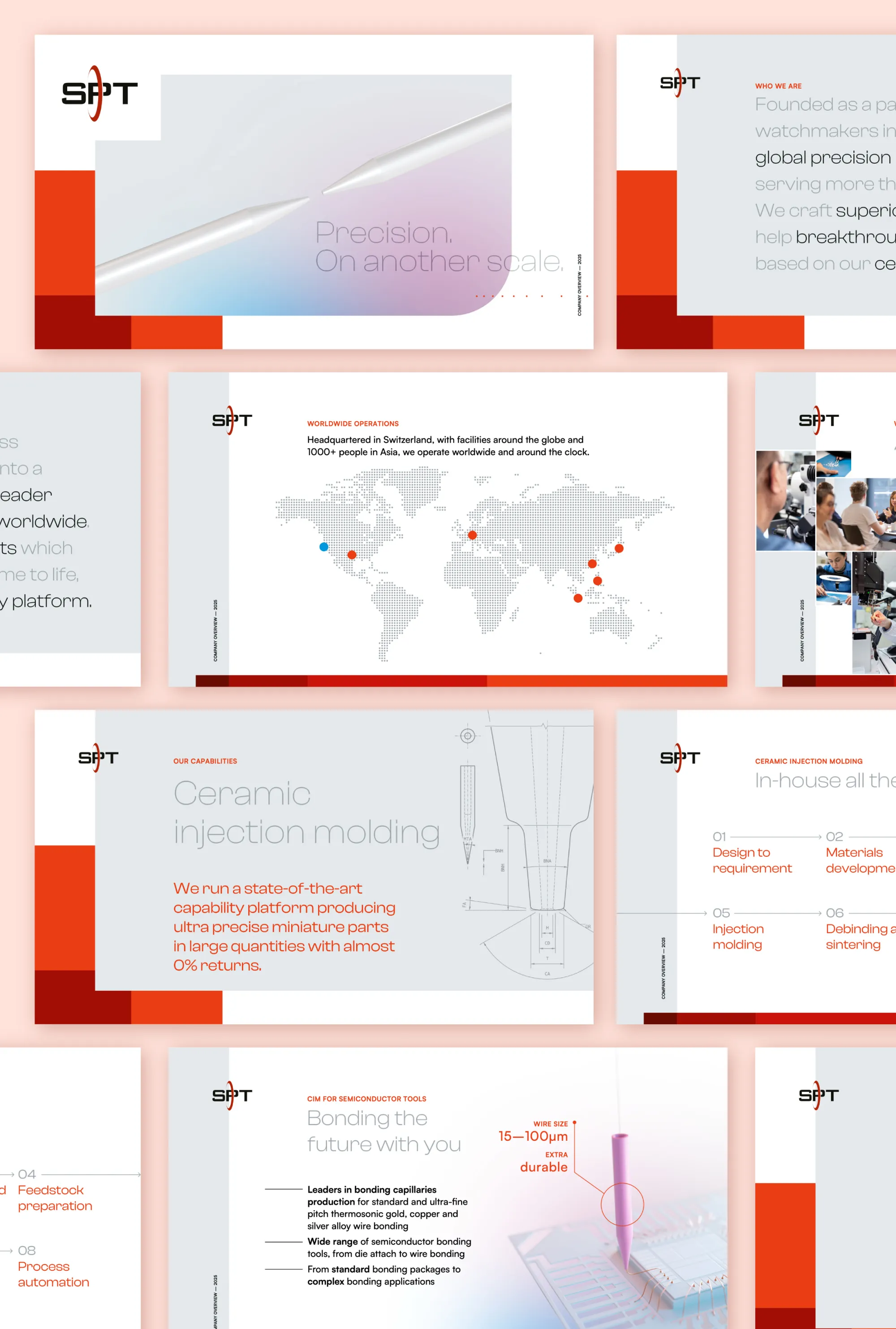Case study: SPT Group

Background
SPT is a market leader in the global precision ceramics industry, headquartered in Switzerland, with facilities worldwide and over 1,000 employees in Asia.
Introducing enhancements in visual communication, Filburg revamped SPT's look and feel, making its communications and branding aligned while inspiring stakeholders worldwide to implement the new SPT branding and tone.
This enabled the company to enter new arenas of medical device and precision ceramics applications as a true market leader.
Challenges
Our initial analysis has shown that there was a lot of opportunities to communicate effectively with potential clients across the touchpoints the company already had, and that a lot of commercial action occurred at conferences and trade fairs. The company's collateral was often deeply technical, so it did not work with less technically inclined buyers. SPT also sought to establish its online presence and connect with a broader global audience.
Process
With global operations in China, America, and Europe, we engaged stakeholders across regions, gathering insights through interviews, surveys, and workshops to understand unique market needs and the company’s global values.
We defined a clear global brand positioning aligned with new business goals working closely with top management and updated the corporate visual identity.
New brand platform was used and embedded across all key segments of SPT’s communication, ensuring consistent messaging inside and outside the company.
We crafted new commercial messaging for growth segments, balancing technical precision with accessible language for all target groups, and developed new channels and tools, digital and other, to enhance SPT’s online presence.
Solutions

Filburg clarified and synchronized messaging across verticals, producing various collaterals to support the new messaging. We added a unified photo pool and 3D renders to align visual assets with the new brand direction.
The ESG webpage and Code of Conduct materials were key initiatives in aligning global operations with SPT’s core values, ensuring every stakeholder—internal and external—understands the company’s commitment to ethical practices and sustainability.
The complete company image was updated globally to ensure consistency, clarity, and a unified message across all regions, serving as a vital tool to align teams, support sales efforts, and effectively communicate SPT’s values and strategic goals to diverse audiences worldwide.
Regular activities on LinkedIn were set up, along with thought leadership initiatives to increase reach and position SPT as an active industry leader.
We developed a global trade fair protocol to ensure maximum returns from SPT’s participation worldwide. It included pre-event outreach, onsite engagement, and post-event follow-up, ensuring that every touchpoint added value.

Impact
The visual identity was inspired by precision, a key value. Filburg refreshed the old visual identity and added a structured grid system to ensure consistency across offices and countries. The color was upgraded to a more dynamic red to visually connect it to Swiss heritage.
Filburg clarified and synchronized messaging across verticals and produced various collaterals to support new messaging. We added a unified photo pool and 3D renders to align visual assets with the new brand direction.
The ESG webpage and Code of Conduct materials were key initiatives in aligning global operations with SPT’s core values, ensuring every stakeholder—internal and external—understands the company’s commitment to ethical practices and sustainability.
The complete company image was updated globally to ensure consistency, clarity, and a unified message across all regions, serving as a vital tool to align teams, support sales efforts, and effectively communicate SPT’s values and strategic goals to diverse audiences worldwide.
Regular activities on LinkedIn were set up, along with thought leadership initiatives to increase reach and position SPT as an active industry leader.
We developed a global trade fair protocol to ensure maximum returns from SPT’s participation worldwide. It included pre-event outreach, onsite engagement, and post-event follow-up, ensuring that every touchpoint added value.